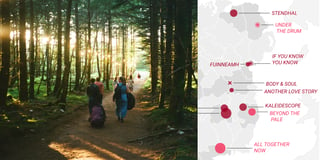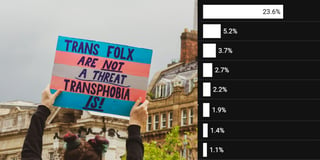Who decided British place names should be this confusing?
Hello! Jack from the App team here checking in with a Weekly Chart inspired by the "Map Men."
This week, I was inspired to recreate a map featured in “Why are British place names so hard to pronounce?” by Jay Foreman and Mark Cooper-Jones, aka Map Men. The map appears in the thumbnail of the video and is also shown at 3 minutes, 20 seconds in:

The video explores the notoriously inconsistent pronunciation of a lot of British place names, some of which even Brits mispronounce. The reason for this, as for most other inconsistencies in English spelling, is that the English language has absorbed influences from numerous other languages throughout history.
By plotting the origins of place names, the Map Men show that you can clearly see which languages have influenced Britain and where.
This was intriguing to me and I wanted to explore the data in more detail, but the map is only briefly shown in the video. I couldn’t find it posted online anywhere either, so I decided to try and recreate it myself with Datawrapper.
The earliest existing place names in Britain often have Celtic origins, reflecting the languages spoken by the native Brythonic peoples before other major migrations. These names are most common in Wales, Cornwall, and Scotland, where Celtic languages maintained a stronger presence.
During the Roman occupation of Britain from the 1st to the 5th centuries AD, some Latin place names were established. While not as common as later influences, elements of Latin can still be found in many cities — most notably those ending in -chester, -caster, or -cester, which is derived from castra meaning military camp or fort.
Following the Roman withdrawal in the mid-5th century, Anglo-Saxon settlement lead to the widespread adoption of Old English in England and the displacement or adaptation of existing Brittonic Celtic place names there.
Old Norse names are more common in areas of Britain that experienced Viking invasions starting in the late 8th century, particularly in eastern and northern England, as well as parts of Scotland and Ireland.
After the Norman conquest of 1066, many place names gained new suffixes (and sometimes prefixes) indicating their new ownership. However, these suffixes and prefixes derive from personal names, so I couldn’t detect them in a generic way. The Normans also introduced conjunctions, which I could detect, like Chapel-en-le-Frith and Chester-le-Street.
How I made the map
I gathered the data for this map from Wikipedia’s “List of generic forms in place names in the British Isles” page, combined with a list of cities, towns, and villages in the U.K. from the Ordnance Survey.
I then used a Python script to iterate over each place name and find the generic forms that match it. I also included the original language and meaning from Wikipedia to display them in the map’s tooltips.
The first challenge I encountered was that some suffixes overlap, like -chester (Latin) and -ster (Old Norse).
To resolve these conflicts, I adjusted the script to prioritize the longer suffix when more than one match is found.
Unfortunately this isn’t a perfect solution. For example, “West Lindsey” now gets associated with the Lin- prefix instead of the the -ey suffix, which would be more accurate.
Finally I manually excluded terms that were not distinctive enough and were therefore being overrepresented in the map.
The final result is still not perfect and some of the information is definitely wrong in some places for the reasons stated above, but the distinction between the different regions of linguistic influence is clearly visible.
That’s it for today! I hope you enjoyed enjoyed exploring Britain’s toponymical history. Check in next week for a shiny new Weekly Chart from Rose.



